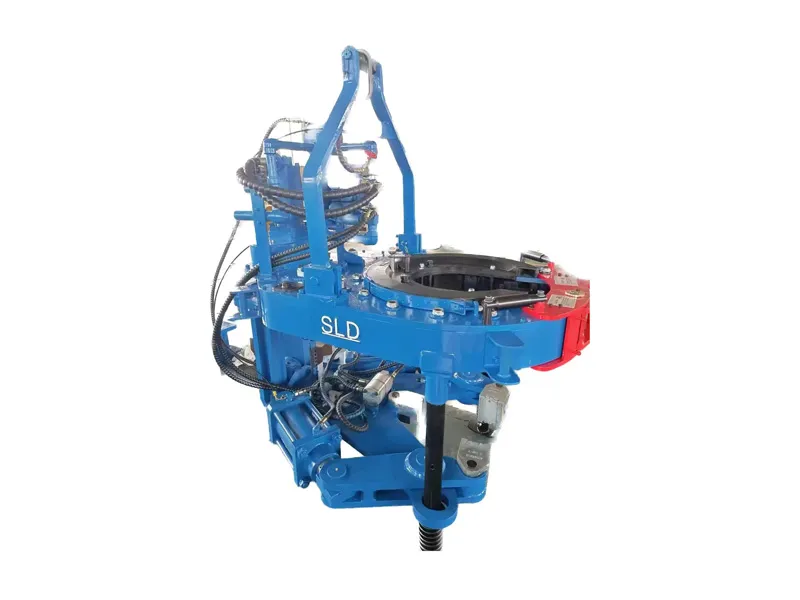What are the safety checks before operating a Bucking Unit?
Browse services
- Petroleum and Gas
- What are the advantages of using a Bucking Unit?
- Common Bucking Unit Operation Errors and How to Avoid Them?
- What are the safety checks before operating a Bucking Unit?
- Bucking Unit Safety Operating Procedures
- How to Use the Operator Panel to Control a Bucking Unit
- How to Calibrate a Bucking Unit?
- What preparations are needed before using the Bucking Unit?
- What is the operating procedure of the Bucking Unit?
- Common faults and troubleshooting methods during the use of Bucking Unit
- How should I replace worn parts of the Bucking Unit?
- How to maintain the electronic control system of the Bucking Unit?
- How does Bucking Unit handle oil leaks?
24 Aug
Bucking units are critical tightening and torque control equipment in industrial production. Their safe and reliable operation is directly related to production efficiency and personnel safety. To ensure that the equipment is in optimal condition before startup, strict pre-operation safety inspection procedures must be followed. This article details the safety inspections required before operating a bucking unit to help operators eliminate potential hazards and prevent accidents.
1. Inspecting the Equipment's Appearance and Mechanical Components
First, the operator should conduct a comprehensive inspection of the overall appearance and mechanical components of the bucking unit:
Mechanical Structural Integrity
Carefully inspect the equipment frame and connecting components for cracks, deformation, or looseness.
Check that all fastening bolts and nuts are properly tightened to prevent them from falling out during operation.
Confirm that the transmission and couplings are free of abnormal wear or looseness.
Guard Installation
Verify that all safety guards and safety doors are intact and securely installed.
Guards must be intact and properly closed to prevent accidental contact with moving parts during operation.
Lubrication of Moving Parts
Check that the lubricant level is sufficient and that lubrication points are re-greased promptly. Ensure that the lubrication system piping is leak-free, ensuring that mechanical components are adequately lubricated during operation.
Sensors and Detection Devices
Check that the torque sensor, speed sensor, and other components are properly installed and that the cables are securely connected.
Ensure that the sensor surface is clean and free of oil or dust to prevent signal interference.
2. Electrical System and Operation Panel Inspection
The electrical system is central to the proper operation of the Bucking Unit. Prior to operation, key inspections must be performed:
Power Wiring and Switch Status
Confirm that the main power switch is off and that the power cord connections are not damaged or loose.
Inspect the electrical cabinet for foreign objects and electrical components for any abnormalities such as burns or odors.
Operation Panel Display and Button Functions
Power on the unit and verify that the operation panel display is normal, with no dead pixels or distorted screen.
Press each function key to verify that it responds quickly and without any lags.
Check that the emergency stop button is functioning properly to ensure that the power can be quickly shut off in an emergency.
Alarm System Inspection
Test the audible and visual alarms to ensure they are functioning properly.
Confirm that all alarm indicators are functioning properly, with no abnormalities such as solid or flashing.
3. Check the Work Environment and Safety Measures
A safe operating environment is also crucial for ensuring the safe operation of the Bucking Unit:
Cleanliness and Safe Distances
The work area should be kept clean and free of debris, ensuring ample operating space.
Keep flammable and explosive items away from the operating area to prevent fire and explosion risks.
Ensure personnel are not in the danger zone of moving parts of the equipment.
Lighting and Ventilation
Check that the operating area is adequately lit to prevent improper operation due to insufficient light.
Maintain good ventilation to prevent local overheating of the equipment.
Fire Protection Equipment
Confirm that the work area is equipped with appropriate fire-fighting equipment and that operators are familiar with their use.
Fire escape routes are unobstructed to ensure rapid evacuation in the event of an emergency.
4. Confirm Operator Status
The personnel factor is crucial for safe operation. Before operation, confirm the following:
Operator Health
Operators should be in good health and not be under the influence of alcohol or drugs.
Concentrated to avoid operating errors caused by distractions.
Personal Protective Equipment
Check that operators are wearing the required protective gloves, safety glasses, non-slip shoes, and other equipment. Avoid wearing loose clothing or jewelry to prevent entanglement with mechanical parts.
Be Familiar with Operating Procedures
Operators should be familiar with the equipment's operating procedures and safety regulations.
Confirm that all pre-startup checks have been completed.
5. Equipment Function and Parameter Pre-Check
After ensuring that the equipment and environment meet requirements, perform a pre-check of the equipment's functions:
System Self-Test Startup
Power on the Bucking Unit and observe whether the self-test process is completed smoothly.
No abnormal alarms or fault indications should be displayed during the self-test.
Parameter Setting Verification
Check whether key parameters such as torque, speed, and pressure set on the operation panel meet process requirements.
Parameters should be within the permitted range of the equipment to avoid overloading or improper operation.
Actuation Test
Perform a no-load, no-load test to observe whether the machine operates smoothly and without abnormal vibration.
Test whether the emergency stop button can promptly cut off power during operation.
6. Check Communication and Data Interfaces
Modern Bucking Units are often equipped with remote monitoring and data acquisition systems. Check the communication interfaces to ensure secure networking of the equipment:
Communication Line Check
Confirm that the communication cable is fully connected and not damaged or loose. Check that the interface plugs are clean and dust-free to avoid signal interference.
System Connectivity Test
Test the equipment's communication with the monitoring center or host computer to ensure normal operation.
Confirm stable data transmission to avoid disruptions to production due to communication interruptions.
7. Summary
The pre-operation safety inspection of the Bucking Unit is a systematic process, encompassing multiple aspects of the equipment, including mechanical, electrical, environmental, and personnel. Strictly implementing these inspections can effectively eliminate potential safety hazards and ensure the equipment operates normally, efficiently, and safely.
Operators should develop good inspection habits and incorporate safety inspections into their daily operating procedures to ensure that the equipment is in optimal condition before each startup. Furthermore, companies should establish comprehensive safety inspection standards and recordkeeping systems to promote a safety culture and reduce accidents.

 Português
Português


